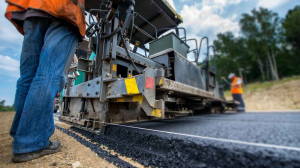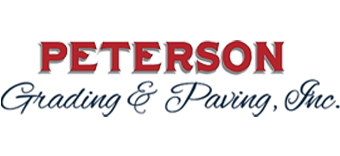Asphalt Paving – What is Binder & Topcoat?
 If you were to overhear a group of contractors discussing asphalt paving, you would probably find that some of the terms they use are a complete mystery to you. However, you may also discover that some terms do not have the same meanings as they do in other settings. For example, you have probably said or written binder and topcoat dozens of times, but asphalt professionals are not talking about a notebook or an outerwear garment when they use the terms. To translate these terms, it might be helpful to discuss how an asphalt pavement is constructed.
If you were to overhear a group of contractors discussing asphalt paving, you would probably find that some of the terms they use are a complete mystery to you. However, you may also discover that some terms do not have the same meanings as they do in other settings. For example, you have probably said or written binder and topcoat dozens of times, but asphalt professionals are not talking about a notebook or an outerwear garment when they use the terms. To translate these terms, it might be helpful to discuss how an asphalt pavement is constructed.
How Does a Contractor Install New Asphalt Paving?
Although there can be some minor variations, commercial paving contractors typically start by compacting the soil that will be under the pavement. Next, the asphalt contractor constructs a base that is made from gravel, stones, or crushed rocks, and each piece will have been sieved to include only those aggregate pieces that meet the size requirements specified by the paving engineer. The asphalt paving company will then install the binder, also known as the base coat, several more layers of asphalt, and finally the topcoat or surface course.
What Is the Binder in Asphalt Paving Terminology?
The binder is called the base coat because it lies at the bottom of the pavement’s structure. It is the first course of asphalt installed, and it rests on the aggregate base. It also contains aggregates that are larger in size than the aggregates in all other asphalt layers. Most Orange County asphalt paving contractors use aggregates measuring around three-fourths of an inch in the asphalt mix for a base coat.
What Is an Asphalt Pavement’s Topcoat?
The topcoat or surface course, which can sometimes be called the finishing course or driving course, is the layer of asphalt that everyone sees when they look at an asphalt pavement. Topcoats are designed to provide a smooth, quiet ride as well as aesthetic appeal. Your paving contractor will use the smallest aggregates for the topcoat.
Why Are Binders and Topcoats Important?
Every reputable paving contractor should know that an asphalt pavement needs a strong, stable base so that the pavement can survive the weight of traffic, temperature fluctuations, and exposure to potentially damaging forces. A well-built binder can strengthen the aggregate base as well as the rest of the structure. The surface course also needs to be strong, but it must be smooth as well. If the surface course fails, it may be possible to repair it or install an asphalt overlay, thereby salvaging the pavement without incurring the expense of rebuilding it. However, if the base coat fails, there is no easy or cheap way to repair it. A repair typically requires the removal of the existing asphalt pavement, then repaving the area after the base is repaired.
Let Peterson Grading & Paving Answer Your Pavement-Related Questions
Over the years, we have built an exemplary reputation for remarkable craftsmanship, true integrity, unmatched customer service, and genuine professionalism. Peterson Grading & Paving offers a full range of paving services, including asphalt overlay installation, paving, parking lot striping, shot blasting, parking lot signage, marking removal, warehouse striping, line removal, asphalt crack repairs, bollard installation, concrete repairs, asphalt milling, ADA compliance, and asphalt repairs. If you are interested in a free quote, use our online request form, call 949-402-6979, or email Ryan@GradePave.com.





Leave a Reply
Want to join the discussion?Feel free to contribute!